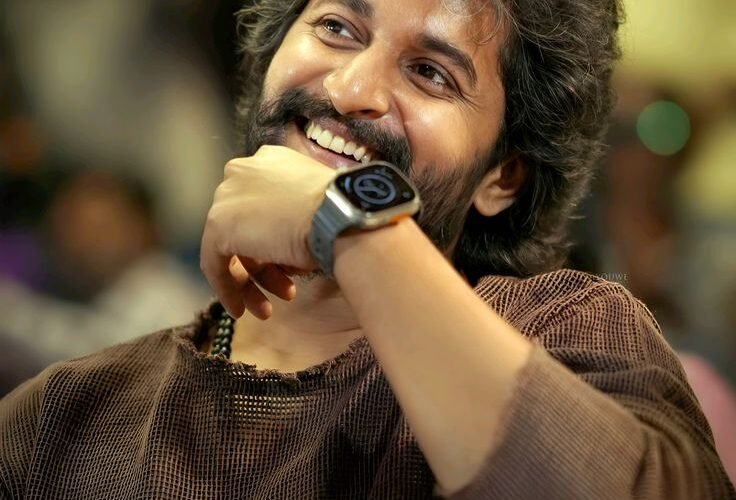HIT 3 Movie Review: Nani Elevates a Gritty Crime Thriller

Released on May 1, 2025, HIT: The Third Case arrives as the latest installment in the gripping and ever-expanding HIT (Homicide Intervention Team) universe. Directed once again by Sailesh Kolanu, the film brings Telugu actor Nani into the crime franchise with an intense, brooding performance that adds a compelling new layer to the series. While the earlier HIT films focused on mystery and slow-burning suspense, this third chapter leans into darker themes, psychological trauma, and brutal justice.
A New Chapter in the HIT Universe
The film picks up in a fresh setting—Jammu and Kashmir—offering a change in backdrop from the coastal cities featured in the previous entries. This setting provides not only breathtaking visuals but also a colder, more haunting atmosphere that aligns with the film’s grim tone.
Nani takes on the role of SP Arjun Sarkaar, a no-nonsense officer known for his ferocity and sharp instincts. Sarkaar receives a transfer from Visakhapatnam to the conflict-ridden landscape of Kashmir to solve a string of disturbing murders. The killer leaves behind mutilated bodies, each marked with cryptic clues. As the investigation unfolds, Sarkaar must grapple with his own traumatic past while chasing a murderer whose motives seem deeply personal.
Srinidhi Shetty plays ASP Mridula, Sarkaar’s colleague and love interest. Their relationship adds brief moments of emotional relief in an otherwise grim narrative. Mridula is not relegated to a simple side role; she contributes actively to the investigation, offering support both professionally and personally.
Adding depth to the antagonist side is Prateik Babbar, who makes his Telugu film debut. As a shadowy, emotionally twisted figure, he portrays the killer with menace and unpredictability, challenging Arjun Sarkaar both physically and mentally.
Nani’s Career-Best Performance
Nani, known for his versatility, delivers one of his strongest and most transformative performances in HIT 3. His portrayal of Arjun Sarkaar is devoid of glamour or lightheartedness. He presents a version of masculinity rooted in pain, morality, and a thirst for justice. The actor balances controlled rage with vulnerability, making Arjun Sarkaar a complex, fully realized character.
From physical transformation to emotional depth, Nani commits fully to the role. His eyes convey both exhaustion and determination, while his body language—often rigid, tense, and alert—reflects the constant pressure of the investigation. Through the film, Nani keeps viewers anchored in the story, even when the narrative takes bloody and emotionally heavy turns.
Direction and Storytelling
Director Sailesh Kolanu retains the franchise’s signature tone—a mix of procedural investigation and psychological exploration—but chooses a more action-oriented approach this time. Unlike the previous entries that emphasized suspense, HIT: The Third Case dives into psychological warfare between the hunter and the hunted. The narrative becomes more character-driven, particularly focused on Arjun Sarkaar’s internal battles.
The film moves at a brisk pace, and Kolanu constructs a layered screenplay that weaves together investigative tension with emotional backstories. Several red herrings and unexpected developments add to the intrigue. However, some viewers may find the transition from mystery to action jarring, especially if they expect the film to mirror the first two installments.
Cinematography, Editing, and Sound
The cinematography by Sanu John Varghese stands out as one of the film’s most compelling technical aspects. Varghese uses Kashmir’s wintery terrain to great effect—shrouded forests, dimly lit interrogation rooms, and snow-covered crime scenes create a chilling ambiance. His camera lingers just long enough to allow viewers to absorb every grim detail without turning away.
Mickey J. Meyer’s music and background score elevate the tension. The score neither overpowers nor distracts, but it skillfully amplifies key moments, especially during high-stakes chases and emotionally heavy scenes. The use of silence and minimalistic sounds in certain sequences adds to the psychological depth.
Editor Karthika Srinivas ensures tight sequencing throughout the film. With a runtime of just over two hours, the narrative avoids lag and maintains a sense of urgency from start to finish. The transitions between timelines, especially scenes that explore Arjun’s past, are seamless and emotionally resonant.
Themes and Psychological Depth
HIT: The Third Case does more than unravel a crime; it explores the psychological cost of law enforcement and personal grief. Arjun Sarkaar’s backstory reveals layers of trauma—loss, survivor’s guilt, and a deep-seated fear of failure. These emotional threads bind the character to the central mystery and make the case personal, which raises the stakes far beyond procedural closure.
The antagonist’s motivations also receive considerable attention. Rather than portraying a cartoonish villain, the film delves into the psychology of revenge, mental illness, and social injustice. These explorations create a morally ambiguous space where viewers must question the boundaries between justice and vengeance.
Reception and Criticism
Critics have given HIT 3 a mix of praise and caution. The film has earned acclaim for Nani’s stellar performance and the gritty production values. Viewers have praised the intensity, atmosphere, and darker tone of the film, noting that it pushes the boundaries of what Telugu mainstream thrillers usually offer.
However, the film has also attracted criticism for its graphic violence and slightly overindulgent brutality. Some fans of the franchise’s earlier installments, which leaned more on subtle suspense, found the third part heavier and less emotionally grounded in character interplay.
A few critics felt that the romantic subplot, while performed well by Nani and Srinidhi Shetty, did not integrate fully with the core narrative. Others argued that the film’s shift toward action and physical confrontation diluted the psychological tension that worked so well in the previous movies.
Box Office Performance
Despite the divided critical opinion, HIT: The Third Case achieved a remarkable box office opening. On day one, the film grossed over ₹43 crore globally, marking the highest opening in Nani’s career. The strong pre-release buzz, built through teasers and high-octane trailers, contributed to the opening day success.
Advance bookings were particularly strong in urban multiplexes, and the film has shown solid traction in overseas markets as well. If the current momentum continues, HIT 3 could become one of the highest-grossing thrillers in the Telugu film industry this year.
Final Verdict
HIT: The Third Case stands as a bold, visually intense, and emotionally layered addition to the HIT franchise. Nani delivers a performance that may define the next phase of his career, while director Sailesh Kolanu successfully expands the universe in darker and more psychological directions.
Though not without its flaws, the film satisfies fans of gritty crime thrillers who appreciate character complexity, real-world themes, and cinematic boldness. For those willing to explore the darker corners of justice and trauma, HIT 3 delivers a memorable and haunting cinematic experience.













